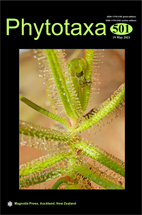Abstract
The Dzungarian Gobi (DzG), one of 16 phytogeographical regions in the country, is located in the southwestern part of Khovd province in western Mongolia. It comprises some of Mongolia’s largest reserves, namely the Great Gobi B Strictly Protected Area and the National Park Bulgan gol-Ikh Ongog. We conducted a comprehensive survey of the area’s floristic diversity between 2009 and 2019 by collecting vascular plants from different vegetation types in various seasons. In addition, we critically checked relevant published literature and material from the herbaria ALTB, GLM, GWF, HAL, KHU, LE, MW, NS, OSBU, UBA, and UBU to determine the occurrence of vascular plant species in the DzG region. Based on our collection data, a comprehensive checklist of DzG’s flora was compiled, representing 913 vascular plant taxa (including 34 subspecies and one variety) belonging to 329 genera and 70 families. Twenty-one taxa were newly found in the DzG region. We also investigated the conservation status of all species noted, and 19 endemic plants and 96 threatened species, including six critically endangered, 26 endangered, 57 vulnerable, and seven near threatened plants were recognized in this region. Eight rare species were newly assessed according to regional conservation status based on GeoCat and IUCN. The richest plant families found were Asteraceae (153 species), Fabaceae (77 species), Amaranthaceae (69 species), and Poaceae (68 species). Several uncertain endemic and non-endemic plants remain still discussion, such as Papaver baitagense and Rosa baitagensis; thus, further studies are needed on their taxonomic and conservation status. For each taxon, we provide its distribution in the region, elevation range, voucher number, and additional references. Finally, we analyzed species hotspots of DzG, based on three different plant species richness criteria: i. all recorded species, ii. endemic species, and iii. threatened species using our georeferenced records. The most diverse hotspot area in DzG is the Baitag Bogd Mountain area, which comprises the highest species number of all three richness criteria.

